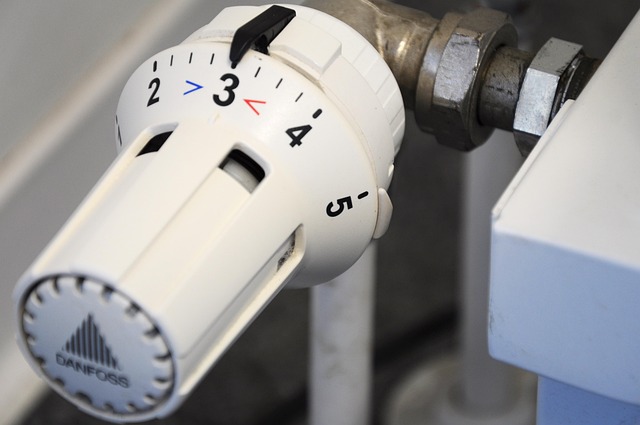Evaluate thermostat location to improve reading accuracy
Placing a thermostat in the right location is a simple step that can noticeably improve temperature reading accuracy and comfort in a home. Small differences in placement—near drafts, direct sunlight, or heat sources—can cause sensors to misread the actual ambient temperature. This article explains how placement interacts with ventilation, airflow, insulation, and system components so you can make informed maintenance and diagnosis decisions.

How does thermostat placement affect accuracy?
Thermostats measure air temperature at a single point, so their location heavily influences how well they represent the temperature experienced throughout a room or home. If a thermostat sits in a microclimate — near sunlight, appliances, radiant heating, or drafty windows — its sensors can register warmer or cooler values than the living spaces. That in turn causes the furnace or boiler to cycle inappropriately, increasing wear and reducing energy efficiency. Optimal placement helps the control system make accurate decisions, reducing frequent cycling and lowering stress on components.
Small placement changes can change readings by several degrees, so when performing routine maintenance or inspection, test alternative nearby spots to see how the thermostat responds. Use a reliable thermometer to compare readings and identify persistent biases that suggest a relocation or additional insulation is needed.
Where not to place a thermostat: airflow and ventilation
Avoid hallways, locations directly above or below vents, and spots near return-air grilles where ventilation can distort readings. Strong localized airflow from supply registers can cool or warm the thermostat independently from the rest of the room. Similarly, placing a thermostat near doors or windows without proper insulation can expose it to drafts during cooler months, biasing the temperature lower and prompting unnecessary heating.
When evaluating a thermostat during diagnosis, observe typical airflow patterns during both heating and cooling cycles. Ensure the thermostat is mounted on an interior wall away from direct air streams so it reflects the average ambient conditions rather than transient ventilation effects.
How furnace or boiler operation influences readings
The broader heating system affects how representative a thermostat’s readings will be. Furnaces and boilers create temperature gradients as warm air or water moves through a building; rooms closest to a furnace or the boiler risers can warm faster, leading the thermostat to shut off heating before distal rooms reach comfort. Conversely, poorly insulated areas near exterior walls may stay cooler, causing longer system run times.
During maintenance, check that duct registers and radiator output are balanced and that insulation is adequate around pipes and ducts. A balanced system helps the thermostat sense a temperature closer to the home average and reduces the need for aggressive control strategies.
What role do sensors and insulation play?
Thermostat sensors vary in accuracy and response time. Smart thermostats include algorithms and remote sensors that can average readings from multiple locations; simpler mechanical or basic electronic units rely on a single sensor. Insulation quality around exterior walls, attic spaces, and floors shapes indoor temperature distribution. Poor insulation can create cold pockets that mislead a single-point sensor, while improved insulation flattens temperature gradients and improves control accuracy.
If repeated diagnosis shows inconsistent readings, consider sensor recalibration or installing supplementary remote sensors in distant living areas. Proper insulation upgrades often yield the dual benefit of more uniform temperatures and improved system efficiency.
Routine inspection, diagnosis, and maintenance steps
A periodic inspection should include checking the thermostat’s mounting height (typically 4 to 5 feet above the floor), ensuring it is level, and verifying it’s not obstructed by furniture or curtains. During maintenance, clean the thermostat casing and verify sensor function against an accurate thermometer. Replace batteries if applicable and update software on smart models for improved sensing and diagnosis features.
Maintenance of other system elements—regular filter changes, duct or flue inspections, and combustion checks on furnaces and boilers—also improves overall performance. Clean filters promote steady airflow, which helps the thermostat read stable temperatures and reduces false calls for heat.
Combustion, ventilation, and broader system effects
Combustion-based systems like gas furnaces or boilers need appropriate ventilation to operate safely and consistently. Combustion drafts or flue issues can create pressure imbalances that influence airflow near the thermostat. During a comprehensive inspection, include combustion appliance ventilation checks and ensure vents are not creating localized drafts that alter thermostat readings.
Also consider the placement of sensors relative to heat-producing devices, lighting, and appliances. Even small heat sources can skew readings and lead to unnecessary cycling or prolonged runtime if the thermostat is misled.
Conclusion
Evaluating thermostat location is a practical step within a broader maintenance and diagnosis routine. Thoughtful placement away from direct sunlight, drafts, vents, and heat sources, combined with good insulation, clean filters, and routine inspection of furnace or boiler components, leads to more reliable temperature readings and smoother system operation. Where single-point sensors continue to produce inconsistent results, consider additional sensors or a relocation that better represents the average living space.






